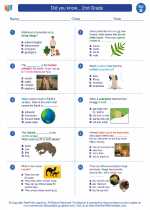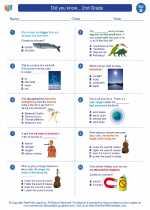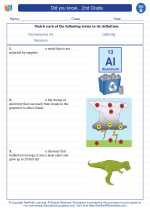Solar Eclipse: Explanation and Study Guide
What is a Solar Eclipse?
A solar eclipse occurs when the moon passes between the Earth and the Sun, blocking all or part of the Sun's light. This phenomenon can only happen during a new moon phase when the Sun, Earth, and Moon are aligned in a straight line.
Types of Solar Eclipses
There are three main types of solar eclipses:
- Total Solar Eclipse: When the Sun is completely obscured by the moon, casting a shadow on the Earth.
- Partial Solar Eclipse: When only a part of the Sun is obscured by the moon, creating a partial shadow on the Earth.
- Annular Solar Eclipse: When the apparent size of the moon is smaller than that of the Sun, leaving a ring of sunlight visible around the moon.
Phases of a Solar Eclipse
A solar eclipse goes through several phases:
- Partial Eclipse Begins: The moon starts to move in front of the Sun, creating a partial shadow.
- Totality (for a Total Solar Eclipse): The Sun is completely covered by the moon, leading to a brief period of darkness in the path of totality.
- Partial Eclipse Ends: The moon moves away from in front of the Sun, ending the partial shadow.
Study Guide
Here are some key points to remember about solar eclipses:
- What causes a solar eclipse?
- What are the three types of solar eclipses?
- Describe the phases of a solar eclipse.
- Why can't a solar eclipse occur during a full moon?
- What precautions should be taken when viewing a solar eclipse?
Understanding the science behind solar eclipses can be an exciting and educational experience. Happy learning!
.◂Science Worksheets and Study Guides Second Grade. Did you know... 2nd Grade
Study Guide Did you know... 2nd Grade
Did you know... 2nd Grade  Worksheet/Answer key
Worksheet/Answer key Did you know... 2nd Grade
Did you know... 2nd Grade  Worksheet/Answer key
Worksheet/Answer key Did you know... 2nd Grade
Did you know... 2nd Grade  Worksheet/Answer key
Worksheet/Answer key Did you know... 2nd Grade
Did you know... 2nd Grade  Vocabulary/Answer key
Vocabulary/Answer key Did you know... 2nd Grade
Did you know... 2nd Grade 

 Worksheet/Answer key
Worksheet/Answer key
 Worksheet/Answer key
Worksheet/Answer key
 Worksheet/Answer key
Worksheet/Answer key
 Vocabulary/Answer key
Vocabulary/Answer key

The resources above cover the following skills:
Earth Systems Science
Weather and the changing seasons impact the environment and organisms such as humans, plants, and other animals. Students can:
Analyze ways in which severe weather contributes to catastrophic events such as floods and forest fires